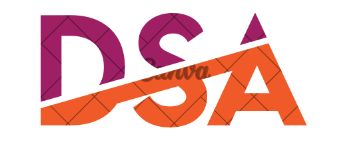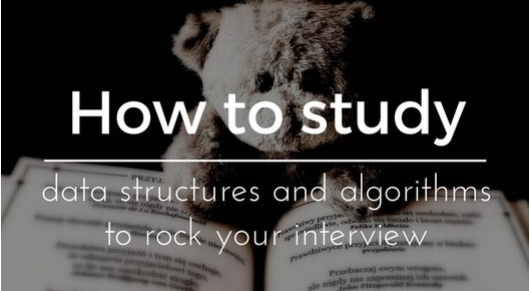
Best DSA Roadmap Beginners Should Know 2025
Apr 10, 2025 4 Min Read 21820 Views
(Last Updated)
Billions of data are generated daily and to process it, businesses require methodologies to follow. These methods followed, work on data to organize it thus saving time and memory during implementation. There the picture of DSA comes into action. If you want to become a software developer which is the most in-demand job in India and abroad, you should be thorough on each and every concept of DSA.
In this article, we’ll be talking about DSA Roadmap for Beginners. But before that, you need to know what DSA is. To understand that, let’s move ahead
Table of contents
- What is DSA?
- Roadmap of DSA For Beginners
- Flowchart and Pseudocode
- Programming Language
- OOPS
- Complexities (Time and Space)
- Basics of DSA
- Solve Problems based on DSA
- Conclusion
- How to start DSA for beginners?
- Can I learn DSA in 2 months?
- Which language is better for DSA- C++/Python?
What is DSA?
DSA, which is Data Structures and Algorithms is the building block of the software development process. It is the basic fundamental required to build a complete web app. DSA is split into two major categories-
- Data Structure – A data structure is a way of storing and organizing data to reduce time and space complexity. The best data structure takes minimum space and time to execute the data.
- Algorithms – It is defined as a set of instructions followed to solve a problem/group of problems. It is a set of operations performed step-by-step to execute a task.
The main goal of DSA is to look after the time and space complexities. If you’re a beginner looking for a complete roadmap for DSA, worry not. This article explains every concept in detail covered in DSA. This DSA Roadmap for beginners will help you to get placed in top tech companies. Let’s get started.
In this article, we’ll talk about the roadmap in pointers. Follow each step thoroughly to crack interviews and get good placements.

If you want to learn Data structures and algorithms, Explore it through GUVI’s Data Structures and Algorithms Course with Python – IIT-M Pravartak Certification.
Roadmap of DSA For Beginners
Below are some of the steps you need to follow to be a master at DSA. Kindly follow these if you want to become a software developer.
1. Flowchart and Pseudocode
Flowcharts and Pseudocodes must be understood very clearly if you’re a beginner who has never been into coding. Flowcharts are step-by-step procedures where a solution to a problem is provided in blocks whereas pseudocodes are the informal language used to express solutions to a problem.
The main goal of flowcharts and pseudocode is to provide a solution, both are not executable, it is just expressed in English to make the reader understand how to initiate and solve the problem.
2. Programming Language
Before you start learning DSA, it’s good to choose a programming language initially. Choosing a programming language plays a vital role in DSA implementation. Having a good command over any one programming language is very important to implement DSA concepts on problems.
Although, there are many programming languages Java/C++ is the most used programming language for DSA. You need to start with basics like data type, syntax, loops, conditional statements, etc., and then move to the advanced level.
3. OOPS
OOPS is again a very important concept that every programmer must know. OOPS stands for Object Oriented Programming which generally means the use of objects in coding. Every element in a code is considered an object. The main purpose of learning OOPS is to understand how the data and the functions operate.
The basics of OOPS are:
- Encapsulation
- Abstraction
- Polymorphism
- Inheritance
4. Complexities (Time and Space)
Time and space complexity can also be important factors for the efficiency of a solution to a given problem. Time complexity can be defined by the time taken to run an algorithm.
To calculate the time complexity, since it depends on the amount of time taken to solve an algorithm, it is dependent on the size of the data. Space complexity is the amount of memory a program takes to run it, it also depends on the input data.
5. Basics of DSA
Now that you have a good grip on any one programming language, you’re good to go with the basics of DSA. You need to understand DSA concepts very thoroughly if you want to become a software developer. Let’s Data Structure and Algorithms into two to understand each clearly.
Data Structure
A data structure is a method to store and organize data so that it can be accessed and updated efficiently. It is categorized into two:
1. Linear Data Structures: These are those types of data structures in which the elements (data) are arranged sequentially or in order. Here, we can traverse the whole line in a single run as the data are stored linearly.
a) Static: It has a fixed memory size. For example- an array
Array
b) Dynamic: The size of memory is not fixed. For example- stack, queue, and linked list.
Queue
Stack
Linked List
2. Non-Linear Data Structures: A type of data structure in which the data is not arranged in order/sequentially. Thus, traversal of the data elements is not easy here.
a) Tree
b) Graph
Algorithm
An algorithm refers to a finite set of rules followed to solve a problem. When there is a given input to solve it and thus the output can be obtained after having some operations done on the problem. Algorithms help us in solving problems efficiently.
The types of algorithms are:
1. Searching Algorithm
An algorithm followed to search for a particular data element or group of elements out of the list is called a searching algorithm.
2. Sorting Algorithm
An algorithm followed to sort a list in ascending or descending order, based on the requirement is known as a sorting algorithm.
3. Recursive Algorithm
When there occurs a situation where a function has to be called again and again, the recursive algorithm plays a major role in that condition.
5. Backtracking Algorithm
An algorithm that works on implementing the solution by searching among all possible solutions. It is an algorithmic method to search for every possible combination to solve problems.
6. Brute Force Algorithm
It is the easiest and most direct method for solving problems. This algorithm is simple but slow. Each state is considered one by one in the brute force algorithm and the best suitable state is carried forward.
7. Hashing Algorithm
In the hashing algorithm, every data has its own unique key, and then the algorithm works similarly to the searching algorithm. Hashing generally refers to the methods of generating fixed-size output from an input of variable size using hash functions.
8. Divide and Conquer Algorithm
In this approach, you tend to break a problem into sub-parts and solve each separately, later the solutions get merged to obtain a final solution.
9. Greedy Algorithm
In this algorithm, the solution to the given problem is built step-by-step, while the best solution built for a part is chosen for the next part.
10. Dynamic Programming
Dynamic Programming also follows the method of splitting the solution into sub-parts and it works by using the already-found solution to the problem.
6. Solve Problems based on DSA
You can only master a particular subject if you have good command over it. And this command can be gained by practicing again and again. The more you practice, the better you get into it. Try solving at least 5-10 DSA problems daily if you’re a beginner and if you’re already well aware of it, you can solve as much as you want to.
If you’re looking for a platform where you can solve DSA problems and excel in it. You can check the CodeKata platform offered by Guvi, which has numerous solved, unsolved questions based on difficulty-medium for you.
Conclusion
Now that you’re well aware of all the DSA concepts, it’s time to get into the depth of each concept and master it. Once you’re done with learning the concepts, start implementing those by doing some amazing projects on DSA. This DSA Roadmap for Beginners will help you to crack interviews and get industry-ready.
If you want to learn Data structures and algorithms, Explore it more through GUVI’s Data Structures and Algorithms Course with Python – IIT-M Pravartak Certification.
To start DSA as a beginner, you can follow these steps:
a) Choose a programming language
b) Have a thorough understanding of basic to the advanced concept of DSA
c) Practice DSA problems daily
d) Build some DSA-based project
When you’ve followed these steps, you’re good to go.
DSA is not a very easy topic hence you have to invest the required amount of time and effort in order to learn it. The more time and effort you give to learning DSA, the more early you can learn it. If you’re a complete beginner, you would require more than 2 months to learn DSA thoroughly.
Every language has its own advantages and it depends on person-to-person as to which programming language is easy for them. Although major researchers show that C++ is a perfect fit for DSA, still it depends on you which one you choose.











![What are Data Structures and Algorithms [DSA]? A Basic Guide 3 What are Data Structures and Algorithms?](https://www.guvi.in/blog/wp-content/uploads/2025/04/What-are-Data-Structures
and-Algorithms-DSA_-A-Beginners-Guide.webp)
![5 Best Reasons to Learn Data Structures and Algorithms [DSA] 4 reasons to learn data structures and algorithms](https://www.guvi.in/blog/wp-content/uploads/2023/03/DSA2.jpg)

![10 Best Data Structures and Algorithms Courses [2025] 5 data structures and algorithms](https://www.guvi.in/blog/wp-content/uploads/2023/03/best-dsa-courses.png)


yah! its a really good career content. i understood this step by by process. i love dsa , one day i crack the dsa problems .